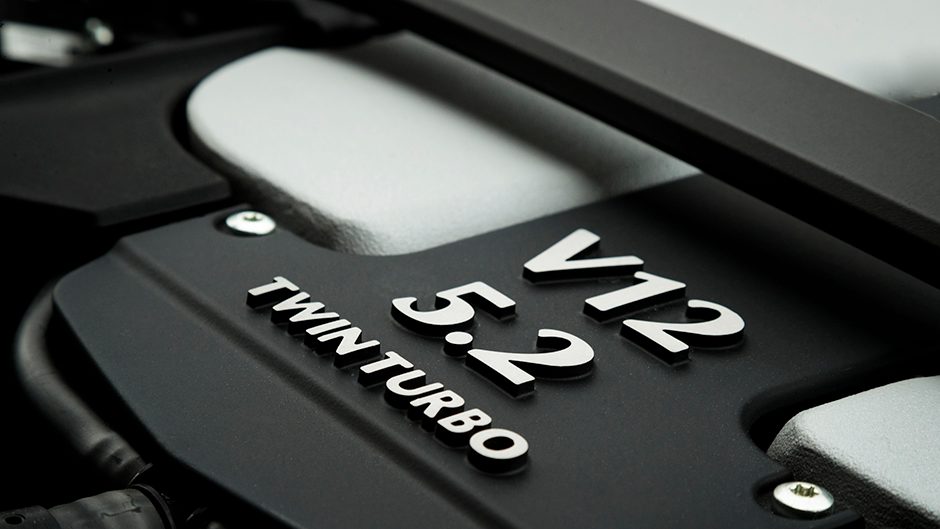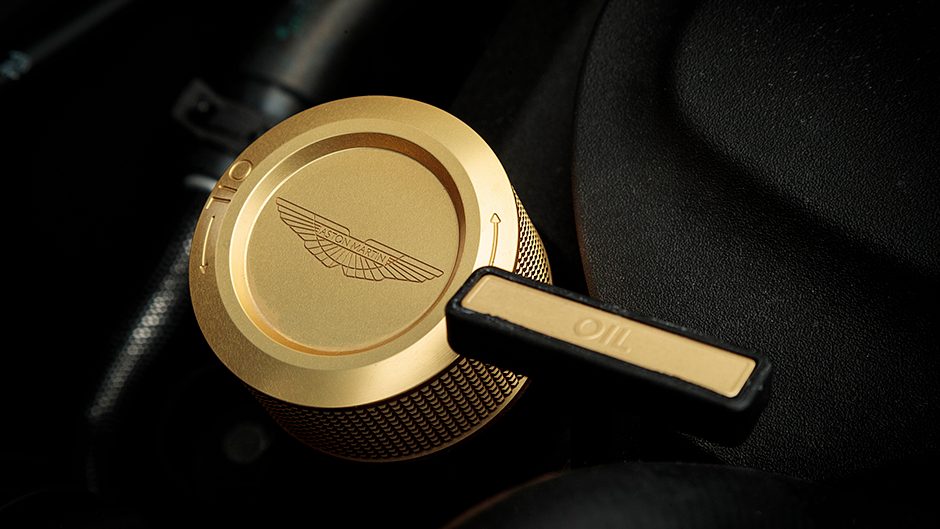2018 Aston Martin DBS Superleggera review
Words Kyle Cassidy | Photos Tom Gasnier
Just what is a super GT? Turns out, it’s an Aston Martin DBS Superleggera, one fast, beautiful and very accomplished machine.
As a lad, the Aston I lusted after most wasn’t the debonair DB5, but rather the brutish Vantage from the early nineties. What’s not to like about a British bruiser with a V8 sporting a brace of superchargers and the promise of 745Nm of torque? The Vantage would eventually end up with 820Nm, a twist figure that has taken Aston nearly twenty years to top.

Enter the new DBS Superleggera. Nothing ramps up torque like forced induction on overboost, and the DBS’s twin-turbo 5.2-litre V12 has been given a squirt of extra puff, the engine now summoning 533kW with 900Nm of thrust, flowing flood-like from 1800 through to 5000rpm. It’s the same V12 as used in the DB11, with additional boost and cooling to realise a further 86kW, though coupled with the Superleggera’s lightweighting and a shorter final drive, this reaches for the horizon like no Aston we’ve driven previously.
The DBS rides on the same aluminium chassis as the DB11 but clothed in carbon fibre it’s said to be 72kg lighter, Aston quoting just under 1700kg for the dry weight. The V12 has stop/start and cylinder deactivation. It’s rated to hit a top speed of 340km/h, while fuel use is quoted at 12.3L/100km but we saw twice that at one point.

The heavy duty ZF eight-speed is rear mounted feeding a mechanical LSD. Helping arrest speed and remove weight are standard carbon ceramic brakes measuring 410mm up front, while the master cylinder and booster have been tuned for improved feel. The front is suspended by forged double wishbones, the rear handled by a multilink arrangement to ensure ride quality and stability are served up equally. It rides 5mm lower than the DB11, with more camber dialled in, and it gets unique bushing and stiffer engine mounts. Damping is adaptive with a silky GT setting, and refined control in Sport and Sport Plus for track work.
The sprint to 100 is said to be done in 3.4sec, but you’d be needing optimal conditions; new tyres with a warmed compound and a sticky runway. On the stretch of road we used, we couldn’t get any faster than 4.5sec, the traction control limiting power through first and second, even when using a light right foot. Cracking a quick 80-120km/h time was tricky too but it registered 1.8sec, which shows how rabidly quick this is.

We should mention that the tester was a pre-production unit, down here for an ice driving event in the South Island and a bit of a track thrashing at Highlands, so the tyres weren’t in optimal condition. Furthermore, the factory had rendered the DSC settings tamper-proof.
Sprint numbers aren’t the forte of a ‘super GT’; it’s more about the breadth of ability, as they say. And, as such, the V12 has been tuned to ‘deliver maximum performance within the rev window in which most road driving typically occurs’. And for the Superleggera, that means anywhere from about 2000 to 7000rpm. The thrust builds monumentally from 2500rpm, torrents of torque forcing the DBS along, and it keeps surging right up to its 7000rpm limit, never running out of puff. You wouldn’t credit how easily it rolls on in seventh gear, cutting long straights to ribbons.

You can snake down a winding road at a quick pace leaving the auto in fifth, with ample torque in reserve to get you off slower bends. Alternatively, activate the Sport Plus driving mode to intensify the V12’s response, reach for the oversized shift paddles and dip into third gear for truly immense surge off the turn and down the straights.
The auto fits the Super GT billing with velvet refinement for mooching around town (smooth take-up, seamless creeping and clunk-free selection of Drive and Reverse), while snapping through the upshifts near the red line, dealing with the 900Nm of gear-grinding torque in an efficient manner. The paddles are the way to go to ensure the best gear, the GT setting too laid back, and both the Sport modes seem more suited for track use.

The rear 305 cross section Pirellis employed to put the power down can have a torrid time of it if there’s a drop of moisture on the road but with a degree of caution to throttle inputs this can still jet out of a corner. Helping the drive off the exit and keeping the front end hugging the turn is torque vectoring by brake, the ESP nipping the inside rear disc while keeping the power flowing to the outside tread. You can give it a bit of gas in the turn to get the system working, which helps rotate the rear and shoot you off the curve. It’s remarkably agile on road for what is a big, weighty machine.
We wished we could have tempered the traction control interventions, erring a little too far on the side of caution, though a few times during our outing we were glad to have it fully armed and able to reign in the 900Nm. The DBS rides low, occasionally the aero spats in front of the wheels kissing down on undulating trails but otherwise it’s sorted for compliancy, the Sport setting of the dampers removing the aloofness of the wafty GT mode but still with enough give for quick road work.

The brakes deliver the stopping power needed for such mass and velocity and don’t tire, though the initial grab and the feel at the pedal aren’t quite reference level. Steering is quick and there’s what we’ll call a refined feel for the action but it could do with a more progressive build up of resistance in turns as it always feels a little over-assisted.
In the GT mode, the steering is feathery light, quickly twirling around for slow speed manoeuvres but the turning circle is rather large. The ride is charming considering the big wheels, and it’s impeccably behaved in traffic, easing along and isn’t too wide to be unwieldy. The exhaust note is subdued in GT mode, the flaps muffling the wail, though it announces itself proudly on start up. It bellows in Sport mode, with a few crackles and pops on the overrun at engine speeds below 4000rpm, though higher up, there’s an odd whirring pump noise, which is it’s only bum note.

The look is said to be inspired by the Vulcan, lending it a predatory stance. It’s muscular yet elegant, and we like how the drawn-in flanks accentuate the wide rear haunches. The devices used to manage the air flow are turned into art on an Aston, or ‘areas of intrigue’ as they call them. Deeper side strakes draw out turbulent air from the front wheel arch, while the slotted ‘curlicue’ and ‘open stirrup’ help channel the flow along those sculpted flanks. The Aeroblade returns, the air flow fed through to the rear via the channels incorporated into the base of the rear pillar. Along with the double diffuser and a discreet spoiler, the DBS is said to generate 180kg of downforce at VMax.
The cabin is one of opulence in the DBS. Okay, the colour combo might be a little Russian oligarch for us but the trim in these new Astons is vastly superior to previous models, lush leather lining just about every surface. The seats are a cunning mix of business and pleasure, and the design embellishments are continued to the lavish headlining.

Like the positioning of the transmission buttons on the dash, we can’t warm to the squared off steering wheel but the positioning of the drive mode and suspension buttons on the spokes is genius while the generous size (and snickety action) of the easily manipulated shift paddles is welcomed. The rear seats are for kids, bags or the pampered pooches only, but the boot is more appropriately sized. For a low slung coupe, entry is fairly easy while outward vision is stellar.
Mercedes lends the infotainment system, there’s a 360-degree camera, iPhone integration and a smart key. No adaptive cruise though or any active safety systems but there’s all manner of optional leather, carbon and veneer treatments for the interior.

Other than a lack of traction off the mark, the DBS is a complete performer with that broad range of abilities a GT needs to deliver, including a penchant for getting frisky in the curves. And it certainly feels like a car one could live with on more than an occasional basis, as we reckon you’d want to get your money’s worth from the $465,000 (starting price, pre-options) asked for the DBS, a genuine Super GT.
| Model | Aston Martin DBS Superleggera |
| Price | $465,000 |
| Engine | 5204cc, V12, TT, 533kW/900Nm |
| Drivetrain | 8-speed auto, rear-wheel drive |
| Fuel Use | 12.3L/100km |
| C02 Output | 285g/km |
| 0-100km/h | 4.5sec |
| Weight | 1799kg |

















